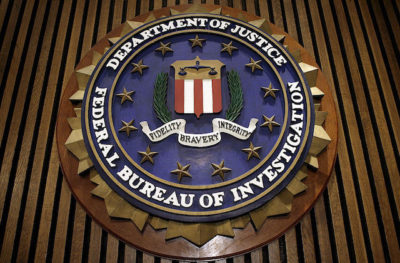The Intercept published data from classified FBI documents that it says shows White supremacists are embedded in police departments across the nation and that the Bureau continues to profile suspects based on race and religion.

WASHINGTON – MARCH 09: The seal of the F.B.I. hangs in the Flag Room at the bureau’s headquaters March 9, 2007 in Washington, DC. F.B.I. Director Robert Mueller was responding to a report by the Justice Department inspector general that concluded the FBI had committed 22 violations in its collection of information through the use of national security letters. The letters, which the audit numbered at 47,000 in 2005, allow the agency to collect information like telephone, banking and e-mail records without a judicially approved subpoena. (Photo by Chip Somodevilla/Getty Images) *** Local Caption *** Robert Muller
In a heavily redacted version of an October 2006 FBI internal intelligence assessment, the agency raised the alarm over white supremacist groups’ “historical” interest in “infiltrating law enforcement communities or recruiting law enforcement personnel.” The effort, the memo noted, “can lead to investigative breaches and can jeopardize the safety of law enforcement sources or personnel.” The memo also states that law enforcement had recently become aware of the term “ghost skins,” used among white supremacists to describe “those who avoid overt displays of their beliefs to blend into society and covertly advance white supremacist causes.” In at least one case, the FBI learned of a skinhead group encouraging ghost skins to seek employment with law enforcement agencies in order to warn crews of any investigations. …
http://www.colorlines.com/articles/read-series-exposes-roles-race-and-hate-play-law-enforcement?utm_term=READ%3A%20Series%20Exposes%20the%20Roles%20Race%20and%20Hate%20Play%20in%20Law%20Enforcement&utm_campaign=The%20White%20House%20Reality%20Show&utm_content=email&utm_source=Act-On+Software&utm_medium=email&cm_mmc=Act-On%20Software-_-email-_-The%20White%20House%20Reality%20Show-_-READ%3A%20Series%20Exposes%20the%20Roles%20Race%20and%20Hate%20Play%20in%20Law%20Enforcement

